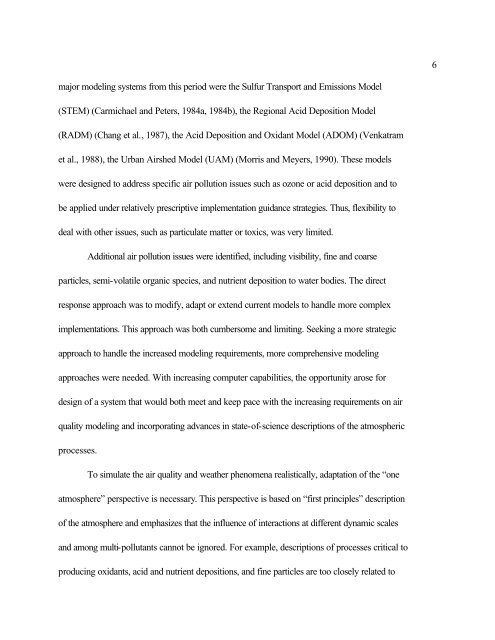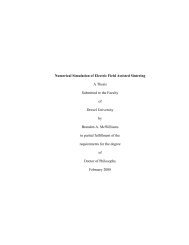Alternative small scale meteorology input to a chemical transport ...
Alternative small scale meteorology input to a chemical transport ...
Alternative small scale meteorology input to a chemical transport ...
Create successful ePaper yourself
Turn your PDF publications into a flip-book with our unique Google optimized e-Paper software.
major modeling systems from this period were the Sulfur Transport and Emissions Model<br />
(STEM) (Carmichael and Peters, 1984a, 1984b), the Regional Acid Deposition Model<br />
(RADM) (Chang et al., 1987), the Acid Deposition and Oxidant Model (ADOM) (Venkatram<br />
et al., 1988), the Urban Airshed Model (UAM) (Morris and Meyers, 1990). These models<br />
were designed <strong>to</strong> address specific air pollution issues such as ozone or acid deposition and <strong>to</strong><br />
be applied under relatively prescriptive implementation guidance strategies. Thus, flexibility <strong>to</strong><br />
deal with other issues, such as particulate matter or <strong>to</strong>xics, was very limited.<br />
Additional air pollution issues were identified, including visibility, fine and coarse<br />
particles, semi-volatile organic species, and nutrient deposition <strong>to</strong> water bodies. The direct<br />
response approach was <strong>to</strong> modify, adapt or extend current models <strong>to</strong> handle more complex<br />
implementations. This approach was both cumbersome and limiting. Seeking a more strategic<br />
approach <strong>to</strong> handle the increased modeling requirements, more comprehensive modeling<br />
approaches were needed. With increasing computer capabilities, the opportunity arose for<br />
design of a system that would both meet and keep pace with the increasing requirements on air<br />
quality modeling and incorporating advances in state-of-science descriptions of the atmospheric<br />
processes.<br />
To simulate the air quality and weather phenomena realistically, adaptation of the “one<br />
atmosphere” perspective is necessary. This perspective is based on “first principles” description<br />
of the atmosphere and emphasizes that the influence of interactions at different dynamic <strong>scale</strong>s<br />
and among multi-pollutants cannot be ignored. For example, descriptions of processes critical <strong>to</strong><br />
producing oxidants, acid and nutrient depositions, and fine particles are <strong>to</strong>o closely related <strong>to</strong><br />
6






